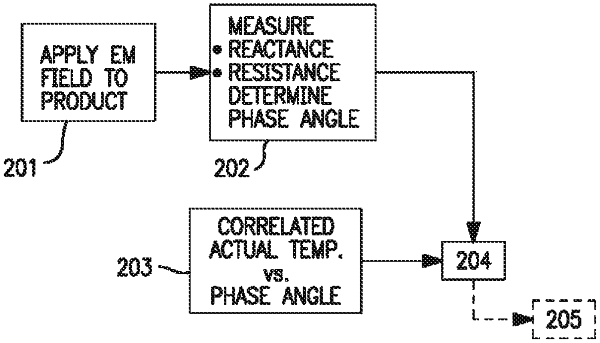| CPC G01K 7/36 (2013.01) [F25D 3/005 (2013.01); G01K 2207/04 (2013.01)] | 35 Claims |

|
1. A method of analyzing a product to determine its temperature, comprising:
(a) providing a correlation of the actual temperature of a reference product having the composition of a product being analyzed, that is conductive, correlated with the phase angle exhibited by the reference product, at two or more different actual temperatures, wherein the phase angle exhibited by a given product is a function of a reactive signal of the given product and a resistive signal of the given product measured in an electromagnetic field of a given strength and frequency applied to the given product;
(b) applying an electromagnetic field of said given strength and frequency to the product being analyzed, measuring the reactive signal and the resistive signal exhibited by the product being analyzed in said electromagnetic field at said given strength and frequency, and determining the phase angle exhibited by the product being analyzed from the measured reactive signal and resistive signal of the product being analyzed; and
(c) determining the actual temperature of the product being analyzed from the phase angle determined in step (b) in accordance with said correlation.
|